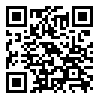1. Birkinshaw, J., & Gupta, K. (2013). Clarifying the distinctive contribution of ambidexterity to the field of organization studies. Academy of Management Perspectives, 27(4), 287-298. [
DOI:10.5465/amp.2012.0167]
2. Brix, J., (2019). Ambidexterity and organizational learning: revisiting and reconnecting the literatures, The Learning Organization, 26(4), 337-351. [
DOI:10.1108/TLO-02-2019-0034]
3. Chams-Anturi, O., Moreno-Luzon, M. D., & Escorcia-Caballero, J. P. (2019). Linking organizational trust and performance through ambidexterity. Personnel Review, 49(4), 956-973. [
DOI:10.1108/PR-07-2018-0239]
4. Colbert, B. (2004), The complex resource-based view: implications for theory and practice in strategic human resource management, Academy of Management Review, 29(3), 341-358. [
DOI:10.2307/20159047]
5. Dolz, C., Iborra, M., & Safón, V. (2019). Improving the likelihood of SME survival during financial and economic crises: The importance of TMTs and family ownership for ambidexterity. BRQ Business Research Quarterly, 22, 119-136. [
DOI:10.1016/j.brq.2018.09.004]
6. D'Souza, D., Sigdyal, P., & Struckell, E., (2017), Relative ambidexterity: a measure and a versatile framework, The Academy of Management Perspectives, 31(2), 124-136. [
DOI:10.5465/amp.2016.0020]
7. Ed-Dafali, S., Al-Azad, M. S., Mohiuddin, M., & Hassan Reza, N., (2023), Strategic orientations, organizational ambidexterity, and sustainable competitive advantage: Mediating role of industry 4.0 readiness in emerging markets, Journal of Cleaner Production, 401, [
DOI:10.1016/j.jclepro.2023.136765]
8. Ghafary A, & Hashem Zadeh Khorasghani G. R. (2024). Identifying and Explaining Factors Affecting Organizational Ambidexterity for the Development of Technological Businesses of ACECR, Based on Qualitative Approach. JMDP. 36(4), 131-158. (In Persian) [
DOI:10.61186/jmdp.36.4.131]
9. Gianzina-Kassotaki, O., (2017). Leadership and ambidexterity: A multilevel analysis of the aerospace and defense organizations [Dissertation]. Warwick Business School. [
http://wrap.warwick. Ac.uk/95904/1/WRAP_Theses_Gianzina-Kassotaki_2017.pdf (26 September 2017)]
10. Gibson, C. B., & Birkinshaw, J., (2004). The Antecedents, Consequences, and Mediating Role of Organizational Ambidexterity, Academy of Management Journal, 209-226. [
DOI:10.2307/20159573]
11. Ghantous, N., & Alnawas, I., (2020). The differential and synergistic effects of market orientation and entrepreneurial orientation on hotel ambidexterity, Journal of Retailing and Consumer Services, 55, [
DOI:10.1016/j.jretconser.2020.102072.]
12. Gualandris, J., Legenvre, H. & Kalchschmidt, M. (2018), Exploration and exploitation within supply networks: examining purchasing ambidexterity and its multiple performance implications, International Journal of Operations & Production Management, 38)3(, 667-689. [
DOI:10.1108/IJOPM-03-2017-0162]
13. Kassotaki, O. (2022). Review of Organizational Ambidexterity Research. Sage Open, 12(1). [
DOI:10.1177/21582440221082127]
14. Khastar, H. (2009). A Method for Calculating Coding Reliability in Qualitative Research Interviews. Methodology of Social Sciences and Humanities, 15(58), 161-174. (In Persian)
15. Latukha, M., Michailova, S., Selivanovskikh, L., Kozachuk, T., (2022), Talent management, organizational ambidexterity, and firm performance: Evidence from Russian firms, Thunderbird International Business Review, 64(5), 379-392. [
DOI:10.1002/tie.22251]
16. Lin, R. J. (2013). Using fuzzy DEMATEL to evaluate the green supply chain management practices. Journal Of Cleaner Production, 40, 32-39. [
DOI:10.1016/j.jclepro.2011.06.010]
17. López-Zapata, E. & Ramírez-Gómez, A.D.J. (2023), Intellectual capital, organizational culture and ambidexterity in Colombian firms, Journal of Intellectual Capital, 24(2), 375-398. [
DOI:10.1108/JIC-08-2020-0286]
18. Mom, T. J. M., Chang, Y.-Y., Cholakova, M., & Jansen, J. J. P. (2019). A Multilevel Integrated Framework of Firm HR Practices, Individual Ambidexterity, and Organizational Ambidexterity. Journal of Management, 45(7), 3009-3034. [
DOI:10.1177/0149206318776775]
19. Nazari, K., vakili, Y., Khastar, H., & Shahriari, S. (2021). Meta-Analysis of Organizational Ambidexterity Antecedents. Innovation Management in Defensive Organizations, 4(2), 1-22. (In Persian) [
doi: 10.22034/qjimdo.2021.266289.1395]
20. Paliokaitė, A., & Pačėsa, N., (2015). The relationship between organizational foresight and organizational ambidexterity. Technological Forecasting and Social Change, 101, 165-181. [
DOI:10.1016/j.techfore.2014.03.004]
21. Pourabedi, M. (2016). An Investigation of Organizational Ambidexterity dominant element in the scientific and technological organizations (Case study: ICECR). Journal of Public Administration, 8(1), 33-54. (In Persian) [
doi: 10.22059/jipa.2016.57501]
22. Priyanka, Jain, M., & Dhir, S., (2022). Antecedents of organization ambidexterity: A comparative study of public and private sector organizations. Technology in Society, 70, 102046. [
DOI:10.1016/j.techsoc.2022.102046]
23. Raisch, S. & Birkinshaw, J. (2008). Organizational ambidexterity: antecedents, outcomes, and moderators, Journal of Management, 34(3), 375-409. [
DOI:10.1177/0149206308316058]
24. Scharp K. M., & Sanders, M. L., (2018). What is a theme? Teaching thematic analysis in qualitative communication research methods, Communication Teacher, [
DOI:10.1080/17404622.2018.1536794]
25. Severgnini, E, Vieira, V., & Galdamez, E., (2018), The indirect effects of performance measurement system and organizational ambidexterity on performance, Business Process Management Journal, 24(5), 1176-1199. [
DOI:10.1108/BPMJ-06-2017-0159]
26. Trieu, H., Nguyen, P., Nguyen, T., Vu, H., & Tran, K., (2023), Information technology capabilities and organizational ambidexterity facilitating organizational resilience and firm performance of SMEs, Asia Pacific Management Review, 28(4), 544-555. [
DOI:10.1016/j.apmrv.2023.03.004]
27. Úbeda-García, M., Claver-Cortés, E., Marco-Lajara, B., & Zaragoza-Sáez, P., (2020). Toward a dynamic construction of organizational ambidexterity: Exploring the synergies between structural differentiation, organizational context, and interorganizational relations. Journal of Business Research, 112, 363-372. [
DOI:10.1016/j.jbusres.2019.10.051]
28. Wang, C. L., & Rafiq, M. (2014). Ambidextrous Organizational Culture, Contextual Ambidexterity and New Product Innovation: A Comparative Study of UK and Chinese High-tech Firms. British Journal of Management, 25(1), 58-76. [
DOI:10.1111/j.1467-8551.2012.00832.x]
29. Wolf, T., Cantner, U., Graf, H., & Rothgang, M., (2019), Cluster Ambidexterity towards Exploration and Exploitation: Strategies and Cluster Management, The Journal of Technology Transfer, 44 (6), 1840-1866. [
DOI:10.1007/s10961-017-9617-5]
30. Zabiegalski, E. P. (2015), Learning Ambidexterity in Organization, Dissertation, The George Washington University.
31. Zabiegalski, E. (2019), The Rise of the Ambidextrous Organization: The Secret Revolution Happening Right Under Your Nose, Business Research Consulting.
32. Zhou, F., Wang, X., Lim, M. K., He, Y., & Li, L. (2018). Sustainable recycling partner selection using fuzzy DEMATEL-AEWFVIKOR: A case study in smalland-medium enterprises (SMEs). Journal of Cleaner Production, 196(1), 489-504. [
DOI:10.1016/j.jclepro.2018.05.247]








